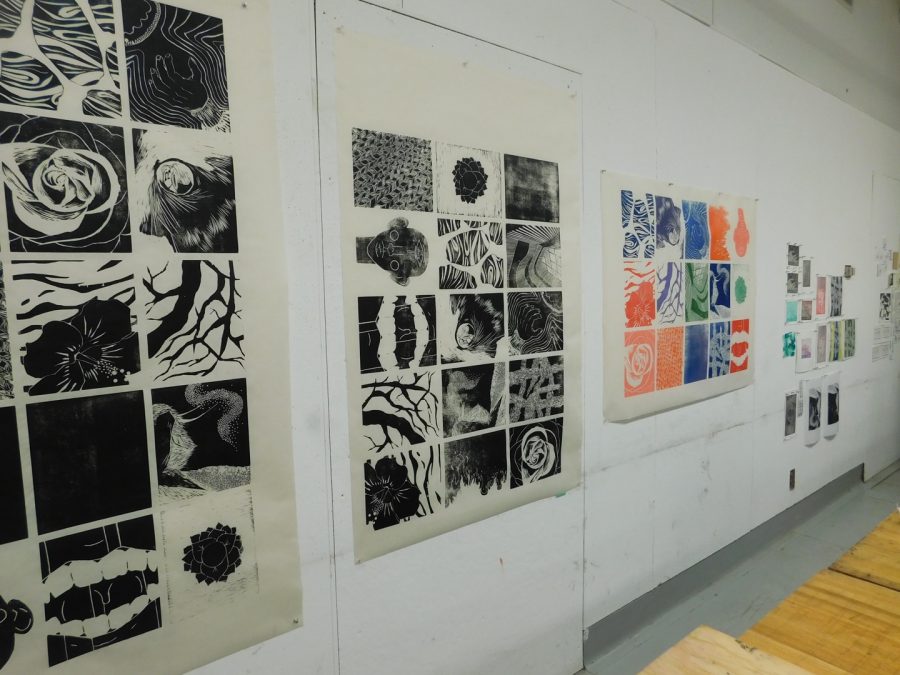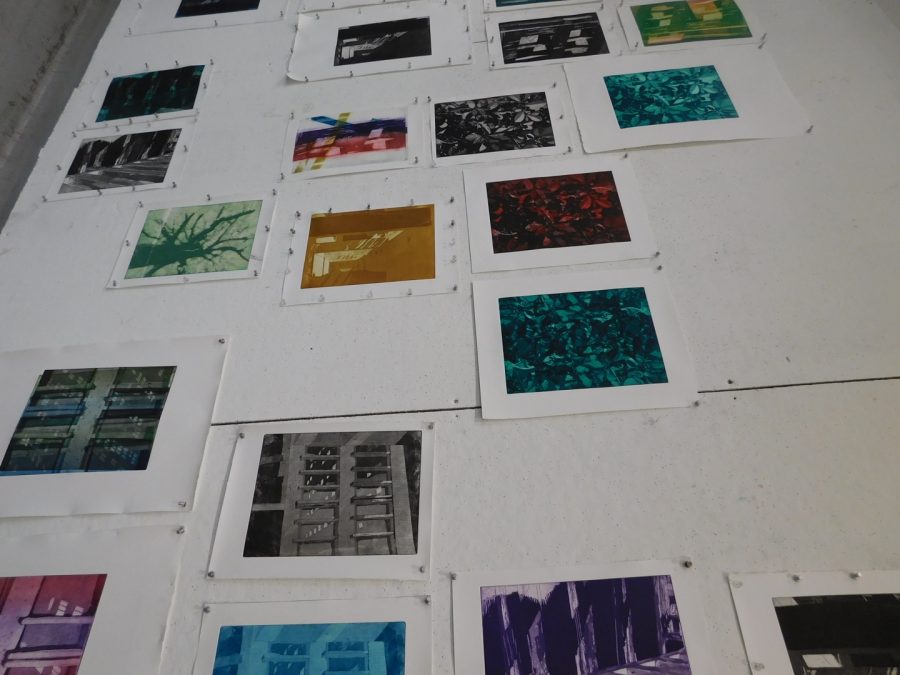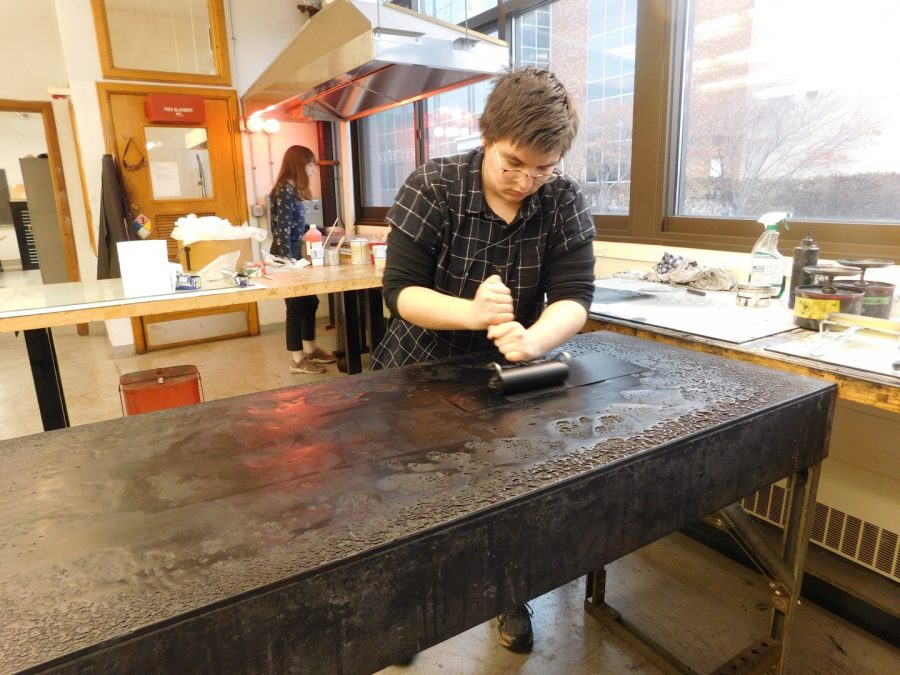Exploring the art of printmaking
Hamline’s Printmaking lab is bringing together fine arts, critical thinking and breadth of study.
November 30, 2019
Hamline’s Fine Arts program is home to many disciplines, but recently the studio arts program has been making use of Drew Fine Arts 103 in order to expand and explore the printmaking lab. Professor John-Mark Schlink of Hamline’s Art department teaches both printmaking and drawing and is known nationally for the works he creates.
“So, at Hamline, we offer printmaking as part of our studio arts program, and we also have the class open to non-majors, so you don’t have to be an art major to take the class,” Schlink said. “So, if you want to get a Fine Arts credit, this is a great class to take. We focus on Intaglio printmaking, which is a term that describes the process of printing on a metal plate.”

Groups of prints, in both color and monochrome. Each large paper of prints shows how many different styles can be present in this work.
The printmaking course can be counted towards the Studio Arts degree, as well as provide a Fine Arts credit and a speaking intensive credit.
Printmaking, or the discipline of printing artwork onto paper, is done by transferring ink from a matrix, such as wood or metal, to a sheet of paper or other material.
“In this class we use copper, and we use wood to do woodcarving. In Intaglio you are scratching right onto a metal place and the marks that you make are the marks that you print,” Schlink said.
Schlink has earned acclaim in both national and international exhibits, showing his prints at the New Prints 2018/Winter at the International Print Center in New York and the Formation International Print Exhibition at the China Printing Museum in China. Schlink’s work has been displayed by museums and collections in Texas and New Zealand.
“I started printmaking as an undergrad, and got really into it, enjoyed it, and went to graduate school,” Schlink said. “In graduate school I studied more, and I just love printmaking. There’s so many possibilities, and I love the graphic quality of making prints. The fact that you can make multiples, so once you make a matrix you can keep printing it and reprinting it. I love the creative process involved in making prints.”

Schlink also spoke about his experiences with the world of professional art.
“Next year I have shows coming up in Bosnia and Cuba, and I also have a solo show at Concordia University this spring. So, in addition to teaching printmaking, I also make my own prints to show,” Schlink said.
Schlink mentions that the reprinting aspect of printmaking allows it to be very accessible for newcomers and that students may find the printmaking classes to incorporate cross-discipline ex
ploration.
“I very much encourage students to explore their own ideas,” Schlink said. “If you’re going to be a major in the program, and you’re going to start out with printmaking, you take a beginning level course and it’s mostly assignment-based. But, as you progress into intermediate and advanced courses it becomes more self-directed kind of work and you begin to really start working with your own ideas.”



